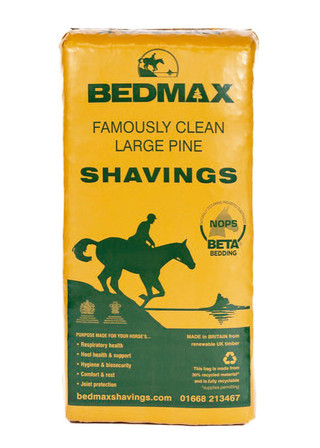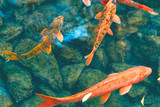What Is The Best Bird Food Storage Container?
If you regularly feed the wild birds that visit your garden, you’ll want to make sure you never run out of bird feed. This means you’ll need to find a safe and convenient way to store your bird food supply to keep it fresh and easily to hand when it’s time to top up your bird feeders. If you want to know what is the best bird food storage container, read on and we’ll share our top tips on how to keep your wild bird food in tip-top condition.
Problems From Incorrectly Stored Bird Food
Incorrectly stored bird food can lead to a several problems. One of the major issues is that bird food such as sunflower seeds, peanuts and other wild bird seed is not only delicious for birds, it’s also highly attractive to pests, such as rats, mice and insects! If your birdseed isn’t stored correctly, pests can easily find their way to your supply and help themselves.
Another problem with poor bird food storage is that your bird food may be exposed to damp or extreme temperatures and begin to go bad. This can be dangerous - and even fatal - to birds that eat it.
Other problems with improper storage are that it can lead to spills of bird food and make refilling your bird feeders messy, tricky and time-consuming!
How To Tell If Your Bird Food Has Gone Bad
The first clue that your bird food has gone bad is if the wild birds visiting your garden don’t seem to be eating it anymore!
You can also inspect your bird feed for telltale clues. Check for insects (alive or dead) or other signs of an infestation. You can also do a sniff-test of your bird food. Musty odours suggest mould or mildew from damp seed. Sharp unpleasant smells are a definite warning sign that your bird food should be discarded.
Look out for signs that rodents may have got to your bird feed such as damaged containers, teeth marks or signs of chewing and even trails of bird food leading away from the container or rodent droppings nearby.

How To Store Bird Food Properly
The best way to store bird food is in a cool, dry place out of reach of pests. Your bird food containers should also have lids on them to keep your bird feed fresh and prevent contamination. If your bird food has gone bad and you are reusing a container, it’s best to thoroughly wash and disinfect the container after disposing of the old feed before you refill it with fresh bird food. If the container is damaged in any way (for example, it’s been chewed through) then it’s better to repair or replace it before filling it with new birdseed.
To keep your bird feed supply fresh and delicious for the birds visiting your garden, only buy enough bird food to match demand and throw away old seed before refilling containers (i.e. never mix old and new seed together.)
The Best Bird Food Storage Containers
So what is the best bird food storage container? Bird food containers come in all shapes and sizes and can be made of plastic or metal. Whichever style of bird food storage container you choose, you should ensure it has a lid to deter pests and keep your wild bird food fresh.
When considering what is the best bird food storage container think about where you’ll keep it. Containers close to feeders makes refilling bird feeders easier and many people choose a sheltered outdoor location like a garage, shed or storage box. You can store bird feed indoors but it needs to be kept cool so make sure it’s away from radiators or warm pipes and isn’t somewhere that is likely to get condensation or damp.
Smaller bird food storage containers are lighter and easier to move so are a good choice if you only store small amounts of bird feed or if you need to carry the container outside to your bird feeder, whereas larger containers are ideal for storing greater amounts of bird food.
Sturdy plastic bins, and galvanized metal containers are popular choices for bird food storage. The most important thing is to choose a bird food storage container that is durable and sturdy making it less likely to crack, rust or break over time and making it difficult for pests to chew through!
All storage containers should have a well-fitting lid to prevent insects and rodents from accessing your bird feed. Watertight lids are ideal as they’ll protect birdseed from the elements if stored outside. If you do keep your bird foor storage container outdoors, make sure it’s weighty enough not to be pushed or blown over!
Labelling your bird food storage container is a great idea so you know what type of bird feed is inside, or if you store several different types of wild bird food, choose clear containers for storage so you can easily identify which is which.
Storage Containers For Fat Balls and Live Bird Food
Fat balls or suet for birds should be stored separately from other types of bird feed (such as seeds) as these have a shorter shelf life, especially in warm or damp weather. They should be kept in their own sealed bird food storage container, ideally made from plastic.
Similarly, if you use live bird food such as live mealworms, these will need to be kept at a specific temperature to prevent them hatching into beetles. A cool, dark, well-ventilated area between 8 and 10 degrees celsius is ideal and you should choose storage containers with deep sides and a lid.
Explore Popular Articles
-
How Sunflower Seeds Can Improve Your Bird's Health
14th Jun 2024Birds are quite attracted towards sunflower seeds, but have you ever wondered about sunflower seeds'
-
The Ultimate Guide to Feeding Peanuts to Birds: Benefits and Considerations
16th May 2024Feeding Peanuts to birds is a common practice due to their high nutritious value. Being an excellent
-
Signs of Overfeeding Fish: How to Spot and Prevent it
7th May 2024Do you know that fish are more likely to die from overfeeding than starvation? One of the most pre














